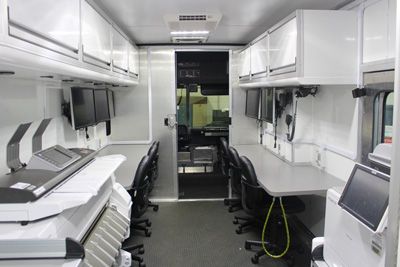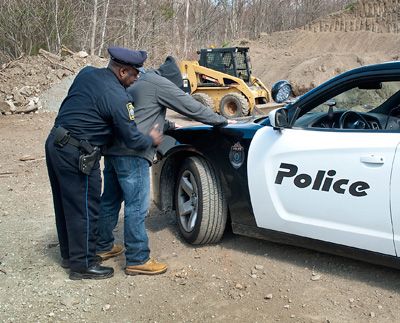Could Cutting the Cord Accelerate Electric Vehicle Growth?
If your fleet operates plug-in electric vehicles (EVs) – or is planning to do so – there’s an emerging technology you’ll want to put on your radar that could impact your vehicle selection and charging infrastructure decisions within the next year or two.
It’s wireless EV charging, which proponents believe holds the key to widespread transportation electrification.
That’s because one of the friction points of operating EVs is the inconvenience of charging with a conventional cord and plug-in system, said David Schatz, vice president of business development and sales for WiTricity (http://witricity.com), a firm that develops wireless charging systems for EVs, headquartered in Watertown, Mass.
Schatz cites a major automaker’s internal study that found that 70 percent of all plug-in hybrid electric vehicle (PHEV) owners never plug in and opt for fueling only with gas because of the “inconvenience” of plugging in their vehicle.
The idea here is that if you cut the cord, you make EV charging more acceptable to a larger market because you’re not forcing users to change their behavior. “PHEV and EV drivers simply park over a charging pad in their garage, or at work, or at a shopping center and charge up with no hands, no effort,” Schatz said.
Wireless charging uses electromagnetic induction to transfer energy from the primary coil – that’s encased in a pad on the garage floor or ground surface of a parking area – to a secondary coil that’s installed on the vehicle’s undercarriage. When the vehicle is parked in the proper position – with the secondary coil directly over the primary coil – an indicator light goes on and charging begins.
Most major automakers are developing wireless EV charging systems, with a few of the OEMs introducing wireless capabilities in the next year or so, including Mercedes with the S550e plug-in hybrid and BMW with the i3 electric vehicle and i8 plug-in hybrid. Evatran LLC (www.pluglesspower.com) has been selling its Plugless Level 2, a retrofit wireless charging system available for Tesla Model S, Nissan Leaf, Chevrolet Volt and Cadillac ELR.
Experts Peer Into Their Crystal Ball
So, what developments can we expect in wireless EV charging in the next five years? How will it impact growth in the EV market? UFP reached out to industry experts to get their outlook.
“In the next few years, we should see the rollout of wireless charging as an option for plug-in vehicles,” said Lisa Jerram, principal research analyst for Navigant Research (www.navigant.com). “I think it’ll be more widespread among the premium [plug-in electric vehicles], but it will be available from other OEMs as well. We’ll also see it being tested in controlled fleet applications. In five years, that could grow to fleet operation in city centers, perhaps electric taxi or rideshare programs. I don’t anticipate it becoming a huge part of the market within five years, but we should see a growing push to use it in electrified urban fleets.”
Andrew Daga is president and chief executive officer at Momentum Dynamics Corp. (www.momentumdynamics.com), based in Malvern, Pa. The company has developed a technology that provides “dynamic charging,” which is currently being tested on a couple municipal electric bus fleets, where vehicles can be recharged wirelessly while they’re in motion or stopped briefly at each stop on the route.
Daga’s outlook: “Every EV produced in the passenger vehicle space will have inductive [wireless] charging technology built in at the production line [in the next five years]. This is not a crystal ball view, it is what we see clearly. We envision that wireless charging is the key to enabling technology that will allow all types of vehicles to become electric, and that it will cause an S-curve adoption acceleration of EVs when fueling becomes an automated background operation. Drivers and fleet operators will not need to think about fueling; it will simply happen. Wireless does for charging what E-ZPass electronic toll collection has done for collecting tolls.”
John Boodhansingh is senior director of product management for Qualcomm (www.qualcomm.com/products/halo), which has developed the Halo Wireless EV Charging (WEVC) system for a number of automakers, including Daimler AG with its upcoming 2018 Mercedes S550e.
“The future of wireless EV charging is bright in the next five years,” Boodhansingh said. “Many automakers have committed to include WEVC, and the number of models that will have WEVC is increasing. And as that increases, that will, in turn, drive the installation of more charging infrastructure for WEVC. At Qualcomm, we view wireless charging as an enabler for the growth of the EV market because it allows drivers to easily and effortlessly charge at home, at work and when visiting retailers. The availability of effortless charging can also help reduce range anxiety because drivers can top off frequently and don’t have to worry about making it to their destination.”
Schatz with WiTricity predicted: “Over the next three years we will first see wireless charging introduced for plug-in hybrid electric vehicles, charging at the 3.6-kilowatt level, so the PHEV can be fully charged in just two to four hours. Then we will see electric vehicles in 2018 and 2019 charging at 7.7-kilowatt and 11-kilowatt charge rates, and by 2020 we expect nearly every global carmaker to have introduced or announced vehicles equipped with wireless charging. Wireless charging will mainly be installed in private garages and at fleet depots. But once standardization is achieved [where chargers are compatible across any make and model vehicle], we will see wireless charging parking spots at company parking lots, retail parking lots and other public parking locations.”
The Bottom Line
A lot is expected to happen in wireless EV charging over the next few years that could impact your purchase decisions with electric vehicles and your investments in on-site charging infrastructure. So, stay tuned.










